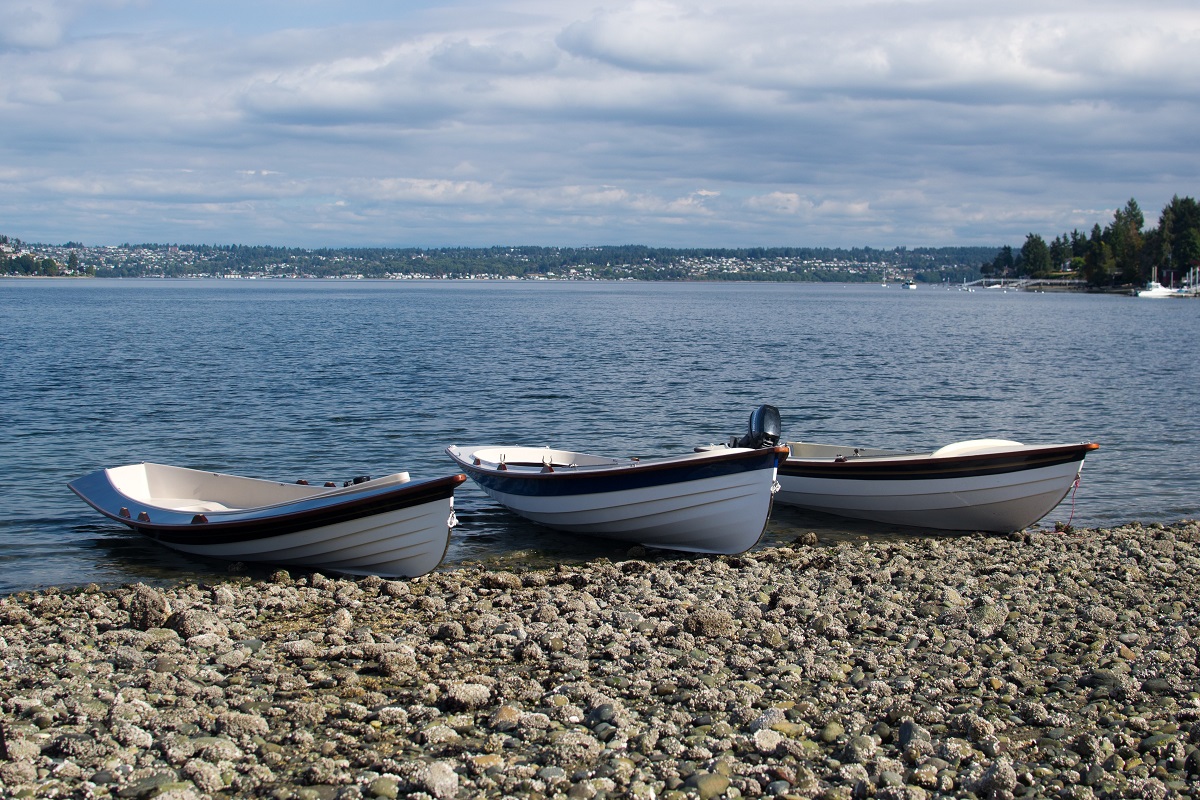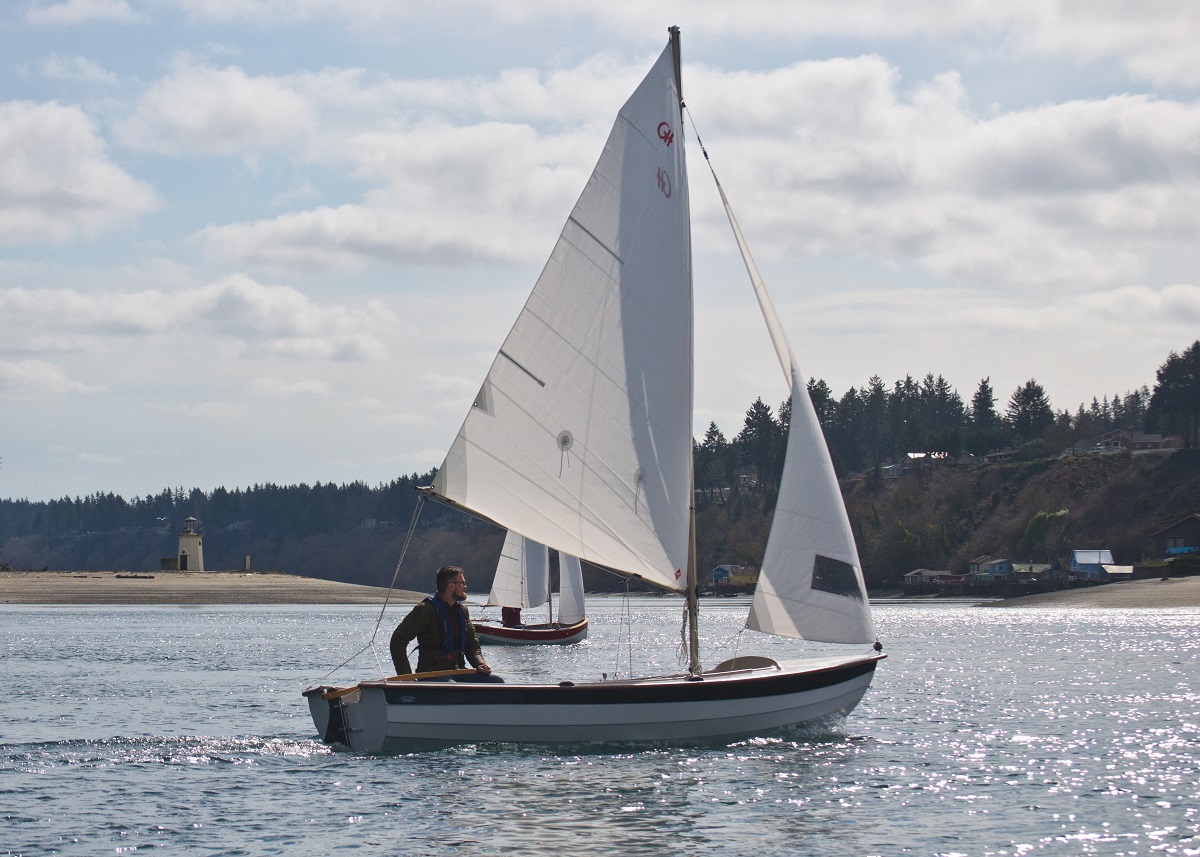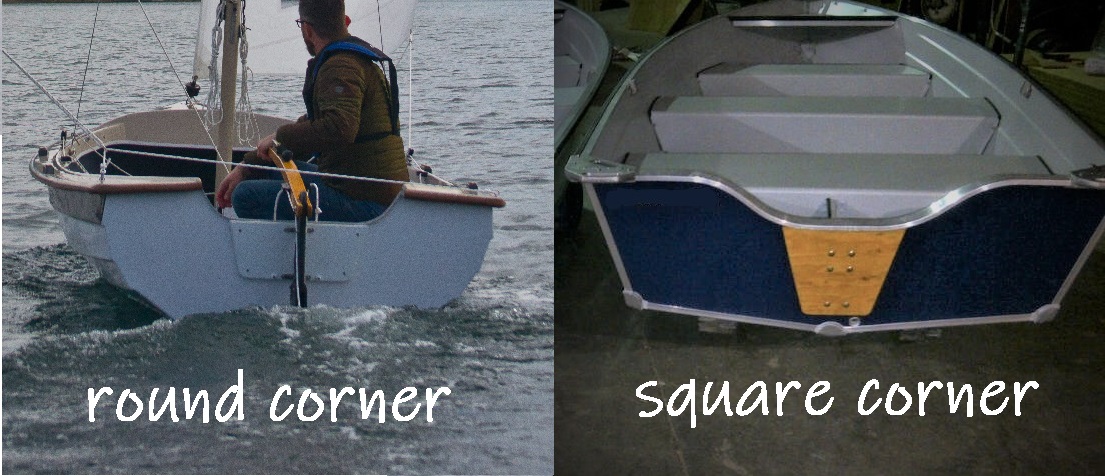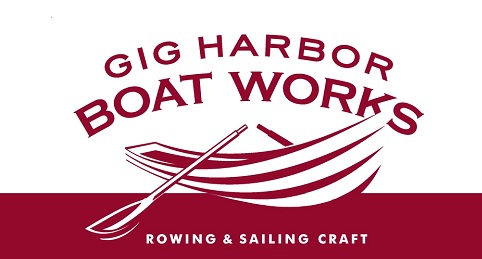The Maine Lobster Boat is a true work horse from the days of working sail. As a capable motor boat, sailboat, and rowboat, there’s an interesting story behind the design that gives it this hallmark versatility.
In our last post about boat design, we talked about the shared heritage of the Melonseed and the Jersey Skiff. Based on a design from working boats on the Eastern seaboard during the 1800s, they feature a box keel that makes them very stable and efficient moving through the water.
The Lobster Boat continues that lineage to the era when outboard motors were invented around 1930. Outboard motors worked fairly well, but they were expensive and unreliable — a bad combination for a working fisherman.
Plus, on the heels of the invention of the outboard motor, Maine discouraged the use of outboard motors in the lobster fishing grounds. It was fine to use an outboard motor to cross the distance from shore to the fishing grounds, but to protect the sensitive bays, fishing was only to be done under sailing and rowing power.
The resulting design used a “semi-dory” hull to fit these unique needs of working lobster fishermen. What we know now as the Maine Lobster Boat is a good decent rowing boat, a surprisingly effective sailboat, and is also the only boat of its kind that has planing speed potential with an outboard motor.
The Next Evolution of the Dory Hull

The Lobster Boat has a Dory bow like its relatives the Jersey Skiff and Melonseed; you can see the similarity in the three boats side by side.
Instead of coming to a pintail stern, the Lobster Boat flares into a flat bottom. Normally a flat bottom creates drag, but in this case they actually rock the stern up just a little bit. The rocker feature makes it so that when you don’t have weight in the back (like an outboard motor), it just kisses the surface and flows over the water . . . creating very little drag.
Turning a motor boat into a sail boat

Compare the sides of the hull on the lobster boat to a modern aluminum fishing boat, and you’ll notice how the sides of the hull of the lobster boat are rounded instead of square. This is what allows the boat to heel under sail without creating drag.
A modern fishing boat of this style has a square transom because they’re designed to carry really big outboard motors, historically speaking. The Lobster Boat was designed to be so efficient, it’ll plane with only about 8 horsepower.

Right: Square corners on an aluminum fishing boat
If your boat has a big square corner, when it heels over under sail that corner drags in the water, making a huge wake behind you. That wake is the visible result of all that weight you’re dragging. Water weighs 8 pounds per gallon . . . so if you’re dragging 100 gallons of water behind you, that’s an 800 pound weight hindering your performance under sail.
This semi-dory hull has very low resistance so it performs exceptionally well under sail . . . making it something of a unicorn among motor boats.
Although the Lobster Boat looks kind of like a motorboat at first glance, once you see it sail you realize its dynamic performance. It’s surprisingly stable, tacking from side to side without drama. It tacks and jibes just in one or two boat lengths with very predictable nature.
If you want to do a lot of sailing, we highly recommend the roller furling genoa option since it gives you the flexibility to adjust to different wind conditions on the fly.

Well-suited for work . . . and for play
The Lobster Boat is well-suited to modern maritime life because it can handle just about any small-craft task you want to throw at it. It has great utility and really good stability because of its workboat heritage.
We can build the Lobster Boat as either a pure rowing/motoring boat, or with the sailing functionality added. The only difference between the two is that the sailing version has a completely encased, fully-retractable centerboard.
Either way, it has a nice big wide flat floor so you can have plenty of elbow room; great if you’ll be fishing, or standing up to pull crab pots. With the optional pot puller dropped into the oarlock, it’s easy to protect your trim (and your back) as you pull the pots in over the side.

The deck gives you some semi-sheltered stowage space up front for essentials like lifejackets and tackleboxes. We also have optional storage hatches in the side seats, so you can have a place to stash any smaller items you’d like to keep dry.

One boat that can do just about everything
The greatest thing about the Lobster Boat is that you can do just about everything with just one boat. If you have a cabin on a lake and you want a boat you can fish in, that you can also sail, and that can get you quickly over to the bar on the other side of the lake at happy hour . . . the lobster boat is the best one for the job.
Our founder, Dave Robertson, says he personally has spent more hours in a lobster boat than any other boat we build. We can’t think of any better testament to its versatility for modern life on the water.
Watch the full video below to get Dave’s perspective and see this design in action!


